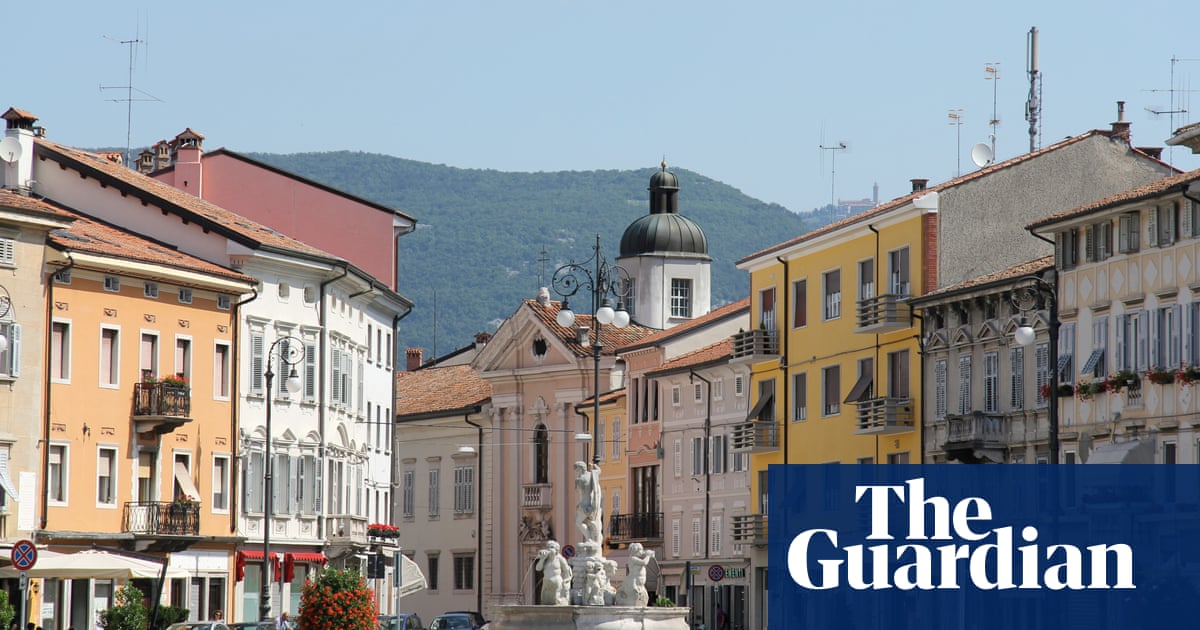Gorizia was split down the middle in 1947 between Italy and Slovenia. Next year the two towns will come together again as European capital of culture
The sunny terrace of Mama Angela wine bar is the perfect spot from which to appreciate the splendour of Gorizia’s Piazza della Vittoria. My train from Venice took more than two hours to chug its way here, and I now find it hard to believe I am still in Italy. I’m sipping a delicious Slovene orange wine, other customers are mostly chatting in local dialect and Slovenian, and across the square are a glorious baroque church, a monumental Neptune fountain and romantic pastel palaces, all dating from when this was part of the Austro-Hungarian empire.
But the glory days of Victory Square are long gone. For the moment, Gorizia is one of those rare hidden gems that is simply not on the radar of most tourists, or even most Italians. At the end of the second world war, the city was unceremoniously split between post-Mussolini Italy and communist Yugoslavia. A brutal metal barrier, topped with barbed wire and patrolled by armed soldiers, separated homes and families, as happened in Berlin, but this town’s fate had little attention from the world’s media. All that is set to change. Continue reading...
